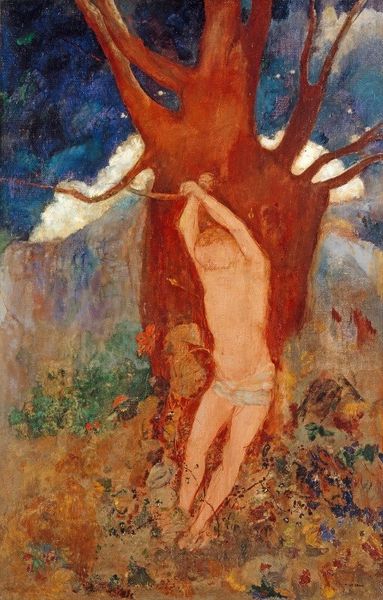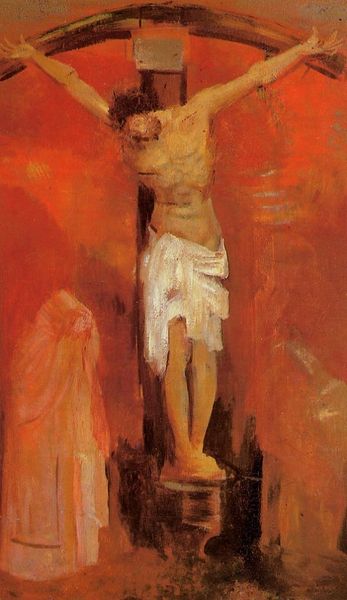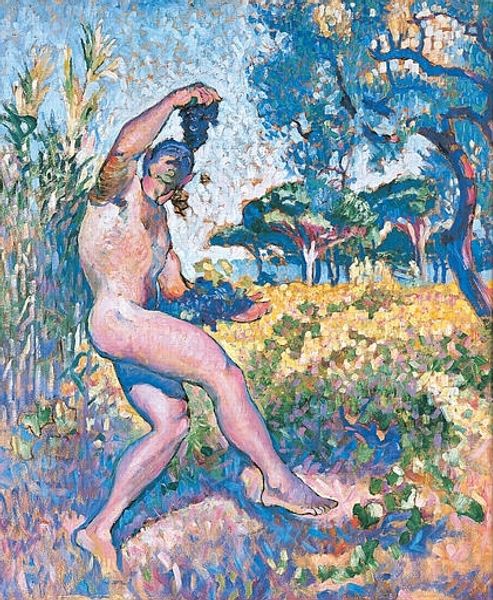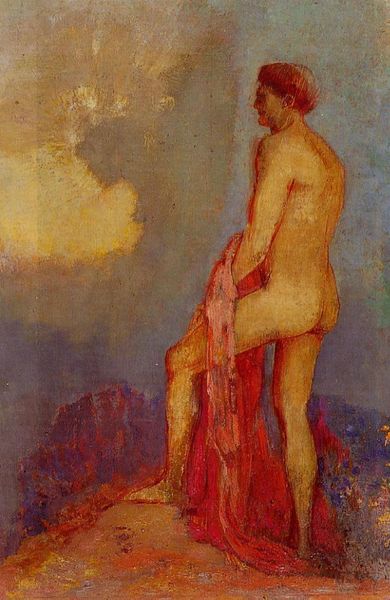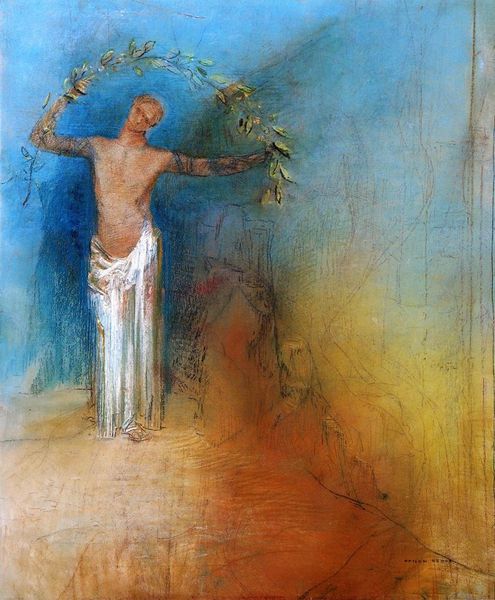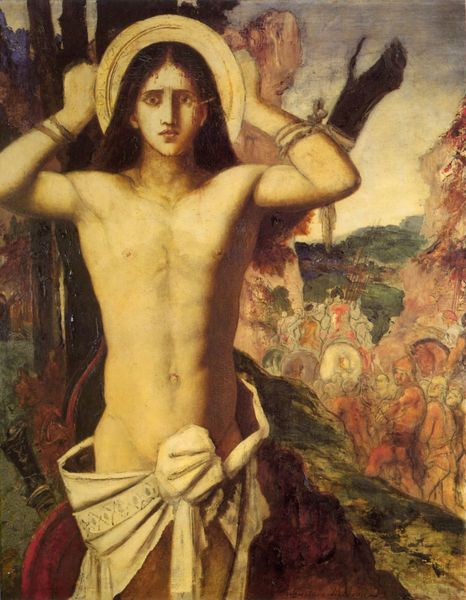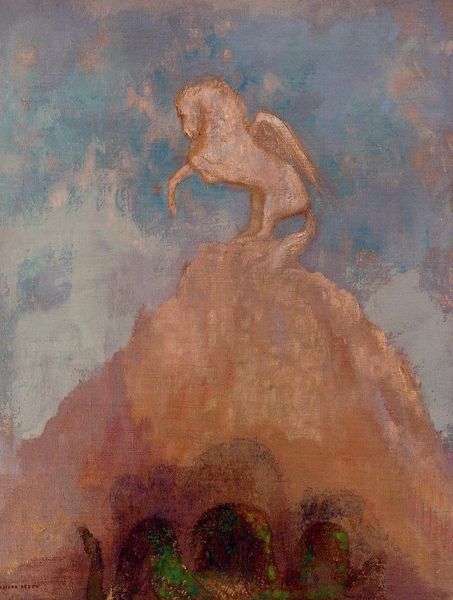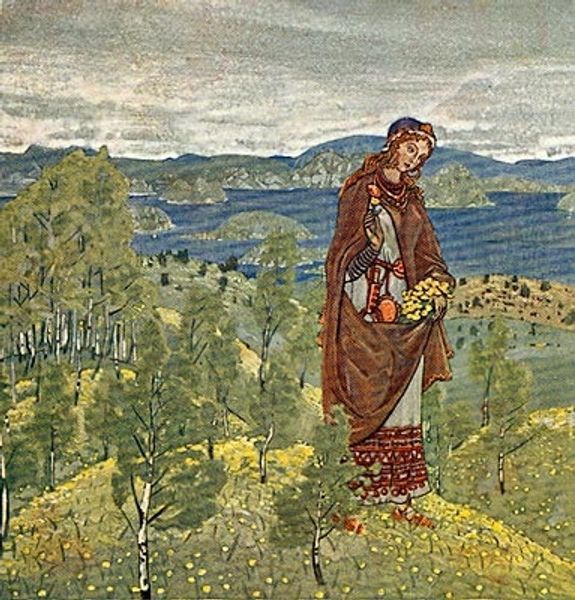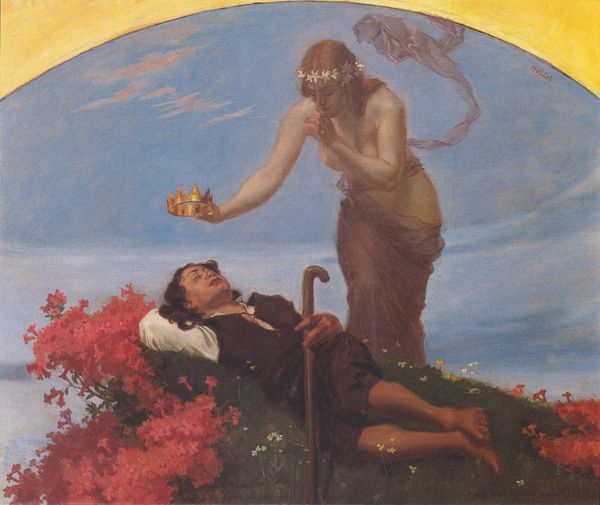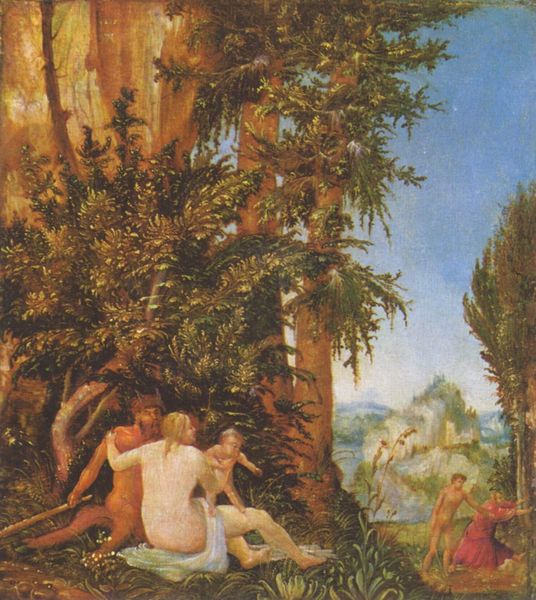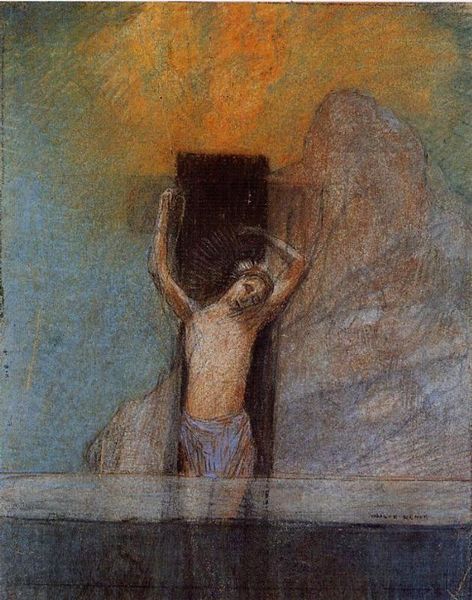
pastel
#
portrait
#
landscape
#
figuration
#
christianity
#
symbolism
#
pastel
Dimensions: 26.75 x 20.88 cm
Copyright: Public domain
Editor: This is Odilon Redon's "Saint Sebastian," a pastel from 1910. The colors are so soft, but the image is undeniably painful and melancholic. How do you interpret this work, with its rather muted tones for such a violent subject? Curator: Indeed, Redon departs from the typically graphic depictions of Saint Sebastian’s martyrdom. It's interesting how he uses the symbol of the wounded figure almost as a landscape element, fusing the suffering with the setting. The arrows, the binding – these are loaded with symbolic meaning, not just of Christian martyrdom, but perhaps more personally for Redon, a sense of inner torment. Notice the field of flowers at the base; do you think those hold any specific significance? Editor: Perhaps a contrast? Life blooming even in the face of death. The vibrant flowers against the stark reality of Saint Sebastian’s suffering creates a striking dissonance. Curator: Precisely. It reminds us that symbols aren't static; they're constantly being re-interpreted. Redon layers these images – religious iconography, natural beauty, human pain – to create something intensely psychological. We project our own experiences, anxieties, even our own hopes for transcendence, onto the image. Consider the lone tree, almost embracing the figure. What does that pairing suggest to you? Editor: I see a sort of protection, a sheltering from the storm of suffering. It's thought-provoking how Redon uses familiar imagery to convey something deeply personal and universal. Curator: Exactly. It showcases the beauty and burden that symbolic representation provides, speaking volumes beyond mere illustration.
Comments
No comments
Be the first to comment and join the conversation on the ultimate creative platform.
